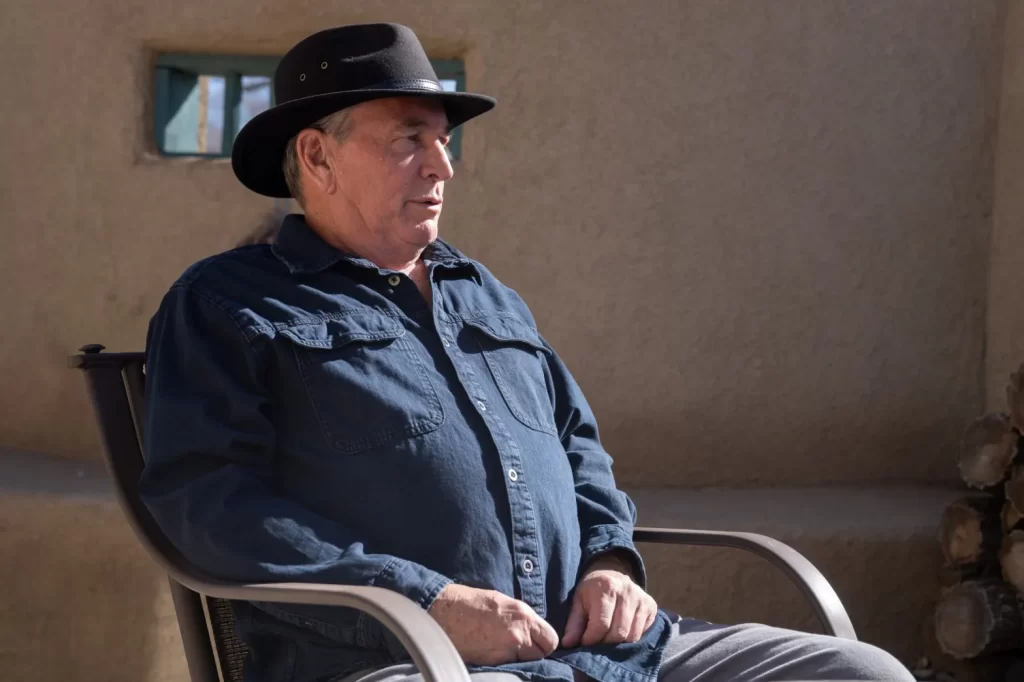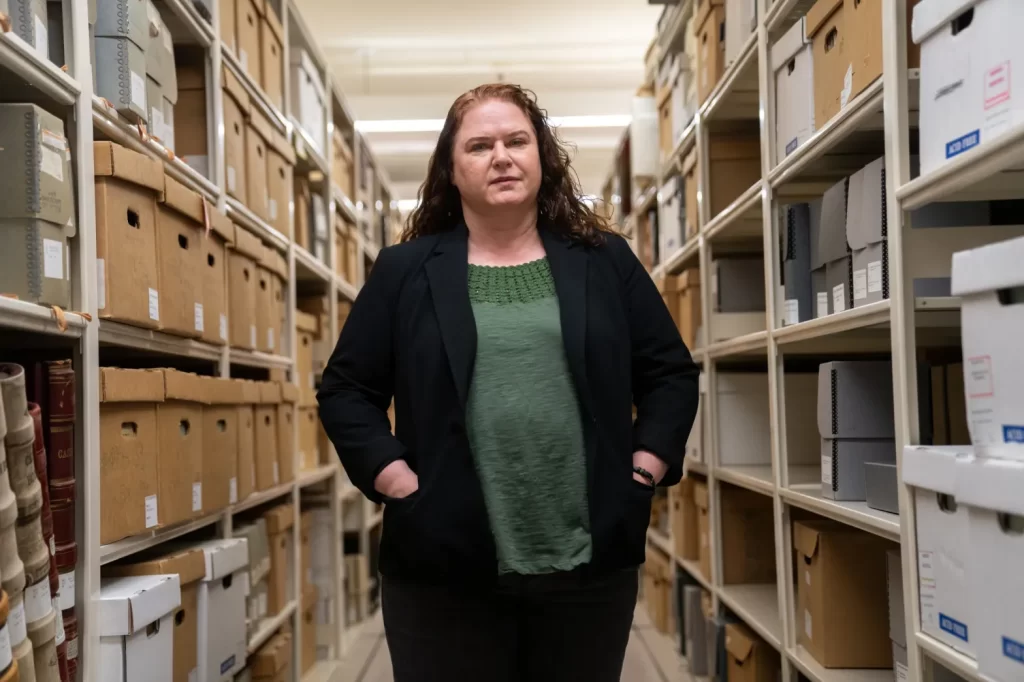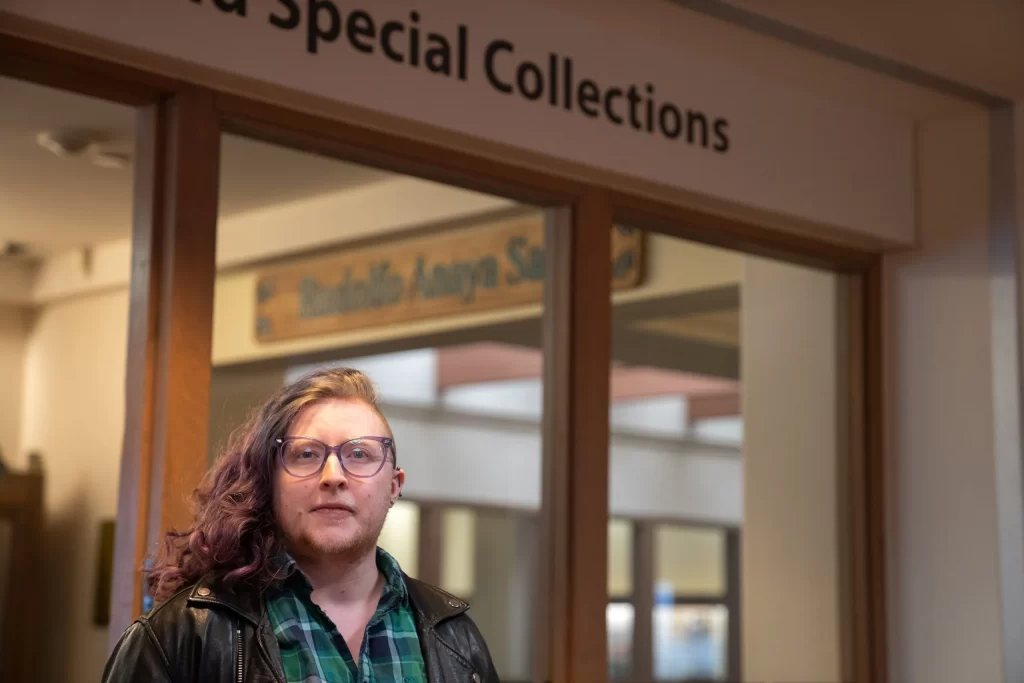SANTA FE (NM)
Searchlight New Mexico [Santa Fe NM]
February 13, 2025
By Alex Heard
A collection of documents about clergy abuse in this state — housed at UNM’s special collections library — is a major step forward for victims, but there’s more to be done.
If you have experienced sexual assault, sexual violence or unwanted sexual contact, you can contact the Rape Crisis Center of Central New Mexico at (505) 266-7711
Links in this story contain graphic descriptions of sexual abuse of minors.
The Archdiocese of Santa Fe Institutional Abuse Collection is an important new archive for documents that were generated, in large part, by victim lawsuits brought during the long, terrible history of sexual abuse of minors by priests in New Mexico. It will be housed at the University of New Mexico’s Center for Southwest Research and Special Collections, and it is set to open to the public sometime in the spring of this year.
“The first time I saw one of the stories from the proofs of claim, I was like, ‘I have to stop,’” said UNM archivist Portia Vescio. “It’s really harrowing stuff in there. We decided that if we put everything online, then people could look at the materials from the safety of their own homes. If they had reactions, if they needed to take a break, they could do so safely.”
The archive, which is entirely digital, will be accessible to users from anywhere in the world. It’s seen as a groundbreaking cooperative effort between two sides that have been in fierce opposition for decades: abuse victims and their lawyers, and the archdiocese and its officials, lawyers and priests. The National Catholic Reporter has called it an “unprecedented” collaboration between survivors and church officials.
This cooperation has not always been smooth, though, and it still isn’t. Fundamental disagreements are affecting what winds up in the collection, which will contain a wide range of materials, including police reports and depositions from survivors — documents which by definition tend to contain detailed, unsanitized accounts of sexual abuse. Another major part of the archive are the personnel files that were kept by the archdiocese on priests who’ve been credibly accused of sexual abuse. The opposing sides disagree about how many priests should be on the list of the credibly accused, so there’s ongoing friction over how many of those files should be in the archive.
Brad Hall, a retired Albuquerque attorney whose firm handled many of the cases represented in the archive — and who was involved in its creation as an outgrowth of the archdiocese’s bankruptcy case — told Searchlight New Mexico that about 400 abuse claimants were included in the eventual settlement, and that all of those claimants were given the option of placing their proofs of claim in the archive.

However, as spelled out in the 2020 Memorandum of Agreement (MOA) that established the archive, individuals have to formally opt-in to be included. “In the absence of a signed ‘Opt In’ form (or express confirmatory email),” the MOA states, “the presumption is that a victim has opted out. His or her victim file, or proof of claim form, or interrogatory answers of depositions, will not be included in the Abuse Documents Archives if a victim has not expressly opted in.”
People who choose to opt-in can also choose whether to do so with redactions — changes made to conceal, for example, the identities and private information of victims and their relatives.
According to librarians at UNM, the archive currently contains around 70 individual proofs of claim, 12 of which were approved without redactions. The numbers 70 and 12 are significant: that exactly matches the number of clients who gave permission to attorneys Hall, Levi Monagle and Lisa Ford to provide their proofs of claim. These three lawyers represented about 140 clients in the bankruptcy. That leaves roughly 260 clients represented by other lawyers.
Have those other clients made decisions on whether to opt-in? It’s impossible to say. The remaining clients were represented by many different law firms, inside and outside of New Mexico. Searchlight contacted five to ask about their clients’ opt-in decisions: Fadduol, Hardy, Cluff and Conaway, Rothstein Donatelli, and The Bennett Law Group in New Mexico; along with Tamaki Law and Fasy Law in Washington State. None replied.
Likewise, officials at the Archdiocese of Santa Fe, including Archbishop John Wester, did not respond to a list of questions about church contributions to the archive. Wester did offer a statement on why he has supported this collection.
“It was very important for us to give the files to UNM because transparency is one of the linchpins to combatting pedophilia,” he said in an email. “The files provide another layer of transparency for victims of clergy sexual abuse, their families and those who study pedophilia, in order to prevent this terrible tragedy from happening in the future.”
The issue of priest personnel files
None of the cases preserved in this archive went to trial — they were all collectively settled — but the prospect of public proceedings taking place is a main reason why the archdiocese chose to seek bankruptcy protection.
“When they filed their bankruptcy petition in 2018,” Hall told Searchlight in an email, “I think we had 20 cases in the pipeline and a few other firms were starting to file cases. The archdiocese could see there was an avalanche of victims coming forward, so they chose bankruptcy as a financial matter. And, as they’ve said, to make sure everybody gets a little closure and compensation, as opposed to there being a handful of big verdicts for a few, and nothing for many other victims.” Hall added that many of the cases were “potentially very high verdict cases — tens of millions.”
Describing the time frame covered in the archive, Hall said victim claims date from the 1950s into the 2000s, with most coming from the 1950s to the 1980s, forming “a sort of bell curve, with the vast majority of abused in the ’70s and ’80s.” Some victims, he said, were sexually abused when they were in pre-school.
The main contribution from the archdiocese will be the personnel files on priests. According to archivists at UNM, they have received approximately 120 personnel files, 68 of which were provided by the archdiocese, the rest supplied by lawyers who represented victims. Most but not all of these files concern priests; some are for other church employees.
As Monagle told Joshua Bowling in Searchlight’s report on the archdiocese’s list of credibly accused priests, there are 83 accused clergy listed on the church website — 105 if you include clergy who worked in the archdiocese but committed wrongdoing elsewhere.
Monagle believes that number ought to be higher. “We should be looking at a minimum of 151 personnel files or related documents in the archive,” he said in an email. “I fully expect the archdiocese to withhold significant portions of these additional files from initial archive production. It will take a legal push to get those additional files produced — likely from UNM. I sincerely hope that the university has the fortitude to pursue them.”
As Bowling explains in his report, the church has apparently decided not to include the personnel file of Father Richard Spellman, a priest who abused one of Monagle’s clients, Mela LaJeunesse. But parts of Spellman’s story will be told, because LeJeunesse opted-in to having her unredacted proof of claim included. Searchlight has not seen this account, but its contents will be disturbing: Spellman started sexually abusing LaJeunesse in 1957, when she was 9.

University archivist Portia Vescio told Searchlight that the nature of the material in this collection informed the library’s decision to make it accessible only online. “The first time I saw one of the stories from the proofs of claim, I was like, ‘I have to stop,’” Vescio said. “It’s really harrowing stuff in there. We decided that if we put everything online, then people could look at the materials from the safety of their own homes. If they had reactions, if they needed to take a break, they could do so safely.”
Avi Woontner, a library information specialist who’s in charge of setting up the digital archive, agreed that the contents can be jarring. Woontner, who earned their dual masters degrees at the University of British Columbia — in library and information science and archival studies — spent a summer working at the Indian Residential School History and Dialogue Centre, which helps provide survivors of Canada’s residential school system with access to archival materials held in the collections of partner institutions.
The archivists declined to give Searchlight an advance look at any material in the archive, but Monagle shared two examples of victim statements that will be included. Both of these individuals have given written permission for the publication of their stories in the archive.
The first account is from a man whose unredacted proof of claim described being sexually abused as a 12-year-old by the late Barry Finbar Coyle, a priest who worked between 1959 and 1974 at the Cathedral of St. Francis in Santa Fe and the Cathedral of St. Peter in Roswell. This victim also described extensive abuse by men he identifies only as Brother Thomas and Brother John, and said he was “sexually assaulted” in 1970 by the late Father Donald Starkey, whose name does not appear on the credibly accused list and who was not accused in litigation prior to the bankruptcy. Monagle does not know the full names of Brother Thomas and Brother John.
The second involves Father Arthur Perrault, who received treatment at the Servants of the Paraclete facility in Jemez Springs, which is discussed at length by Bowling. Perrault fled New Mexico in 1992, reportedly because he was aware that two lawsuits were about to be filed against the Archdiocese of Santa Fe, alleging that he had sexually assaulted seven children. He was arrested in Morocco in 2017, brought back to the U.S. and convicted in 2019 of sexually abusing an altar boy at two different locations in the early 1990s. Perrault remains in prison at Federal Medical Center Fort Worth after filing an appeal that was rejected in 2021. The victim’s account is redacted; his name and personal information will not be included in the archive.


